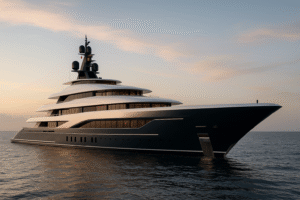In a move steeped in royal symbolism and budgetary prudence, Buckingham Palace has announced that the Royal Family will retire its historic royal train by 2027.
A Farewell to the Palace on Wheels: Why Now?
- Escalating Costs & Maintenance Needs
Though once a symbol of regal grandeur, the train has become less practical. Operating costs have reached as high as £1.2 million annually, with just two trips made in the past year—one costing over £44,000 and another around £33,000. Moreover, the carriages, retrofitted in the 1970s and ’80s, are due for modernization. Continued use would require extensive— and costly—upgrades to comply with modern railway standards. - Fiscal Prudence & Public Accountability
Buckingham Palace framed this as a financially responsible shift, saving an estimated £1 million per year, funds better directed towards Buckingham Palace renovations and staff welfare. This aligns with public expectations of tightening budgets and trimming ceremonial excess. - Modern, Sustainable Alternatives
The royal household intends to use two new helicopters powered by sustainable aviation fuel for future travel. Helicopters offer improved flexibility, security, and eco-friendly credentials over the cumbersome train.
A Storied Legacy: End of an Era
The Royal Train was introduced by Queen Victoria in 1869 and since then has carried generations of monarchs in a blend of historical reverence and luxury. Its burgundy-claret carriages once featured sumptuous dining rooms, private bedrooms, and even full-sized bathtubs. Despite its majestic design, recent journeys have focused more on utility than extravagance. Even still, the move to decommission this “palace on wheels” signals a turning point in royal symbolism.
What Happens Next?
- Final Tour: A sentimental farewell tour across the UK is planned before the current maintenance contract lapses in March 2027.
- Heritage Legacy: Historically significant carriages may be relocated to museums or heritage centers, offering the public a glimpse into royal travel heritage .
- Helicopter Transition: Modern helicopters will fully take over official travel, providing efficient, secure, and eco-conscious transport.
Significance: Modernisation Meets Tradition
This move is more than budgetary pragmatism—it’s a recalibration of royal governance for the 21st century:
- Symbol of Efficiency: King Charles, known for environmental advocacy and modernization, aims to demonstrate a less opulent monarchy—a departure from ceremonial pageantry to purposeful leadership .
- Ecological & Practical Shift: Transition to helicopters powered by sustainable fuel underscores a commitment to environmental stewardship and operational flexibility.
- Boosting Trust: Demonstrating responsiveness to taxpayer concerns and public sentiment can help reinforce the monarchy’s social relevance.





